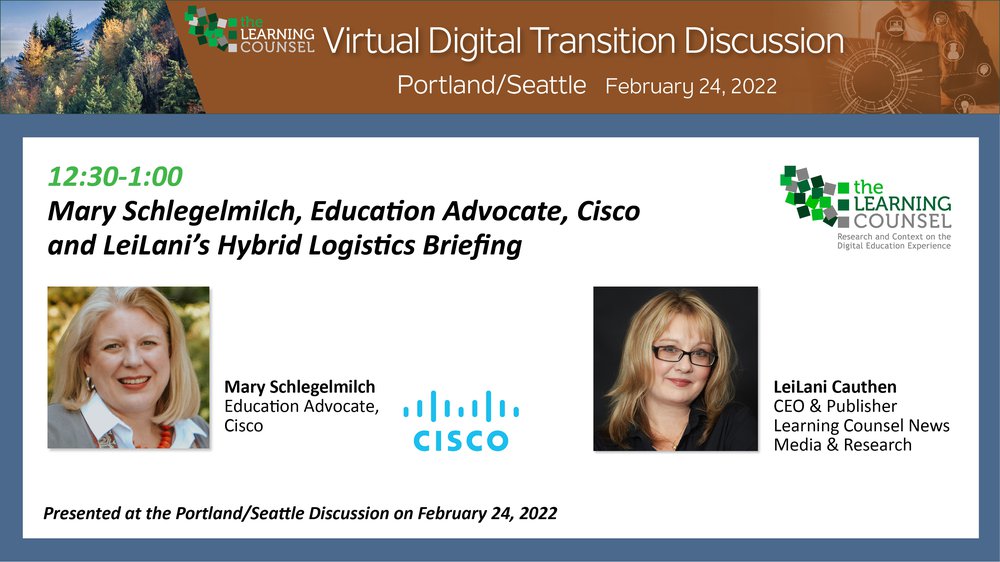Perhaps the biggest thing in education right now is the acceptance and use of the hybrid logistics model of learning. According to Mary Schlegelmilch, Education Advocate at Cisco, “This is where I get into my work with the Learning Counsel that I really love, because I have always said when we choose models of learning, we're really thinking about the synchronous and the asynchronous, and where on a continuum is this model of learning that we need to do for these students? Whether they're in AP world history or whether they're in a high ability literature circle in fourth grade, we need to be thinking about that calendar, the roster, space in motion.
“And then of course the use of the online tools. And that's the piece that we dug in on and said, let's look at the network, the collaboration tech stack, and say, what is needed in every model of learning that we offer to our community? And what we found was so interesting that the tech stack stayed the same. It just moved on that continuum. So, if we were in a traditional class schedule, we may not use much of that synchronous video, but meaning we may use more of the asynchronous video, so that students with different learning models, or that maybe need to look at that curriculum or content again, can easily get to it. Or are we looking more towards that hybrid simultaneous? And then I haven't even brought up hybrid logistics on this slide, but I think what's really interesting is this continuum that we're thinking about always is the calendar, the roster and space in motion.
“And if we have a facilitator in the room, as opposed to maybe a teacher that is going to be doing that direct instruction, that's highly qualified. Is there a difference? And so, we need to be thinking about that as we move forward into these spaces. And I think, that's where we're really going and I’m excited about this. And that's one of those pieces that we're continuing to say, how can the data that is on the network help us by saying, this is what this child has completed to what proficiency, and this is his engagement. We can know that because the camera in his laptop or in his tablet is telling us he's engaged.
“Those are some of those things that we're really starting to work for. And so, let's think about hybrid learning to make sure we give them the tools that are easy to use. A teacher should be able to walk in that room and through artificial intelligence, be able to just say, start my class, or it knows, Hey, it is now time for your math class.”
LeiLani Cauthen, CEO of the Learning Counsel, added, “And that reminds me that one of the things we should tell everyone today is that it's a time to be really curious, like, how do you do this? Well, you just get into it, you know, in every way, like, how is software built? So, it has good UIUX. What does that mean? “What is a signifier in digital? Should the buttons be fatter when they're little kid fingers , because their coordination is not so good? There's just a million things to be curious about right now. It's actually a very, very exciting time as awful as the pandemic has been and continues to be. It's also exciting because there is real transition.”
“This is the time for us to take from what we learned during the past couple of years and not regress back to what it was,” said Schlegelmilch, “but to take those skills and what we've learned and truly reimagine where education should go.”
You’ll want to click on this thoroughly interesting and timely discussion of hybrid logistics. If you are not yet discussing it for your district, chances are you will be very soon.










